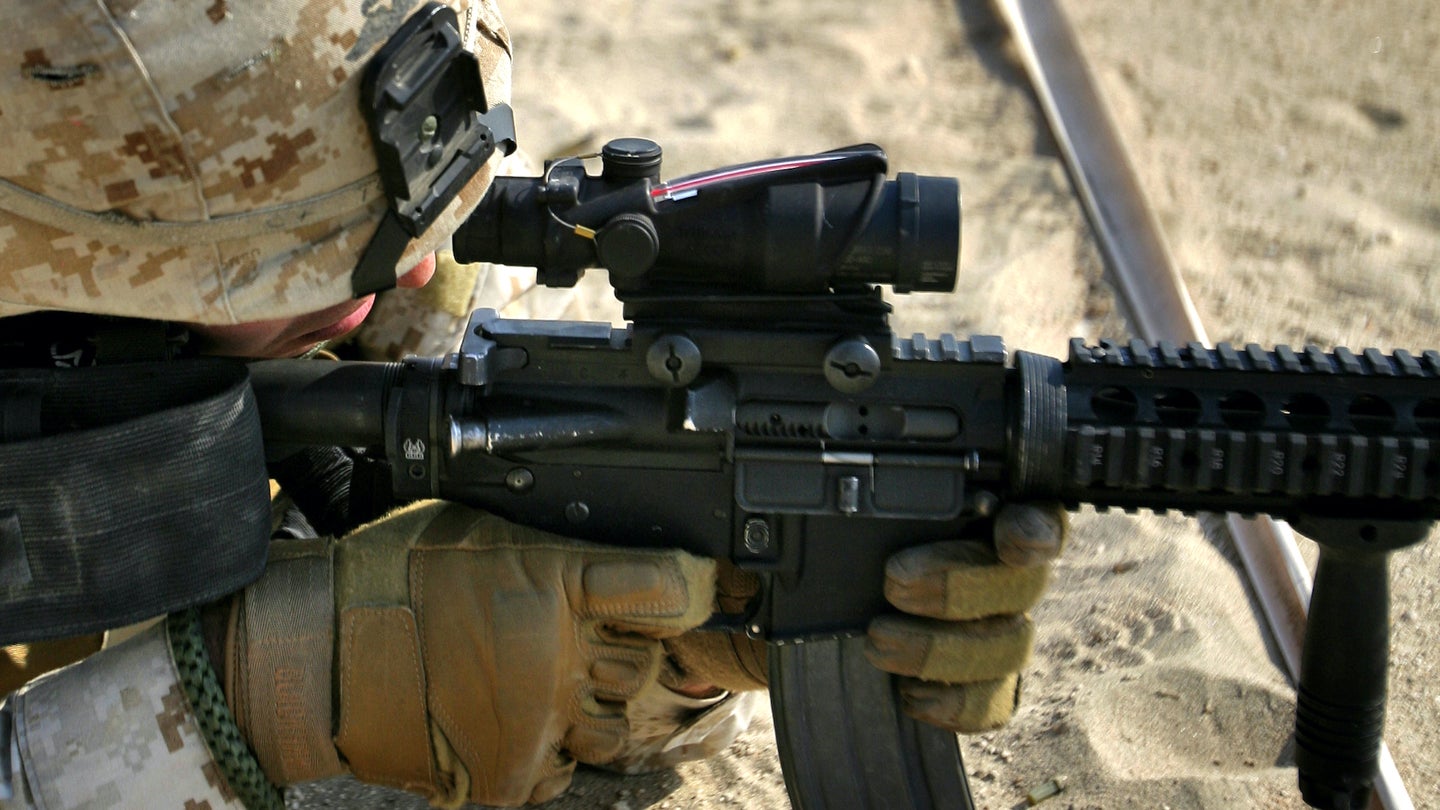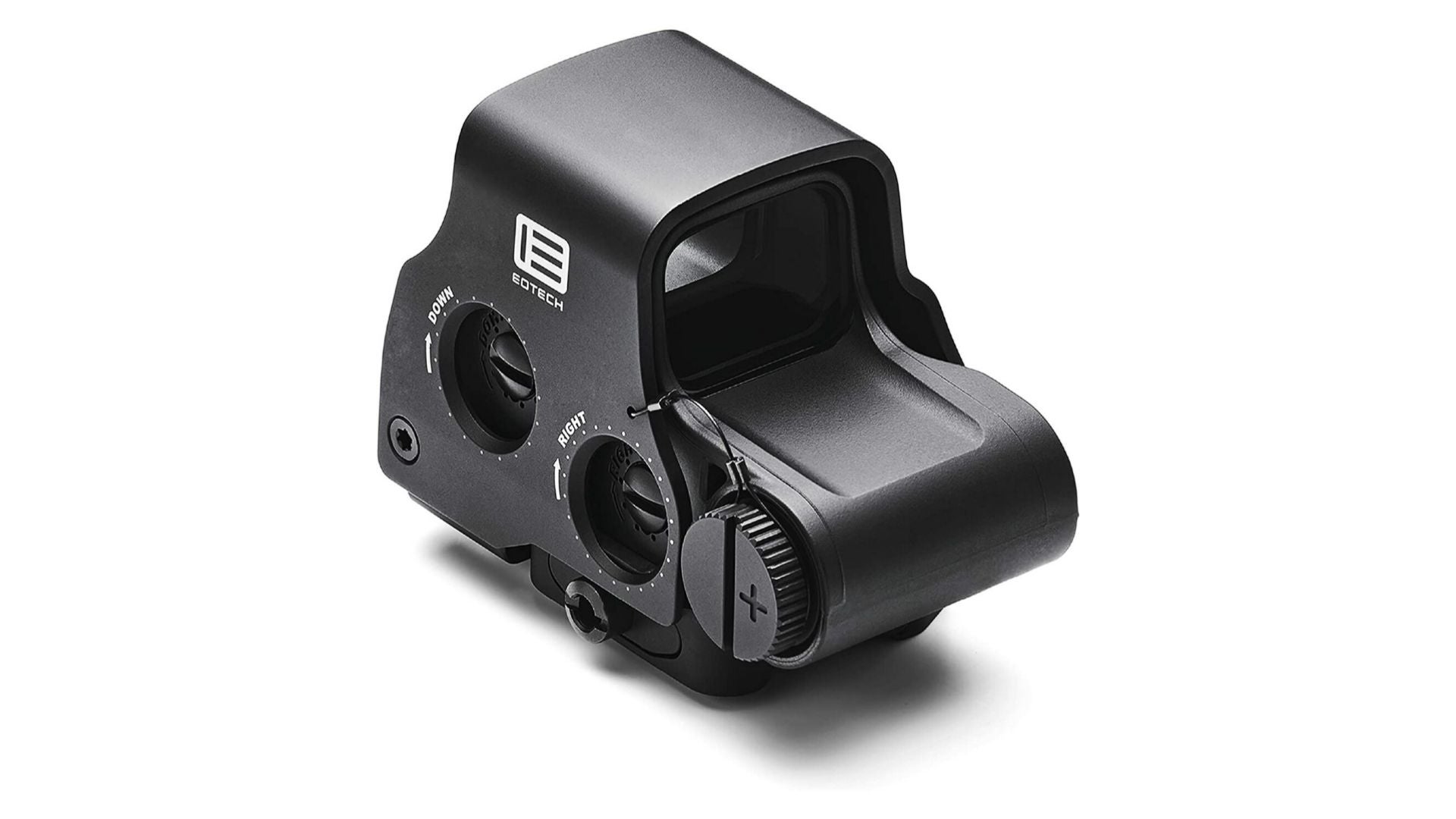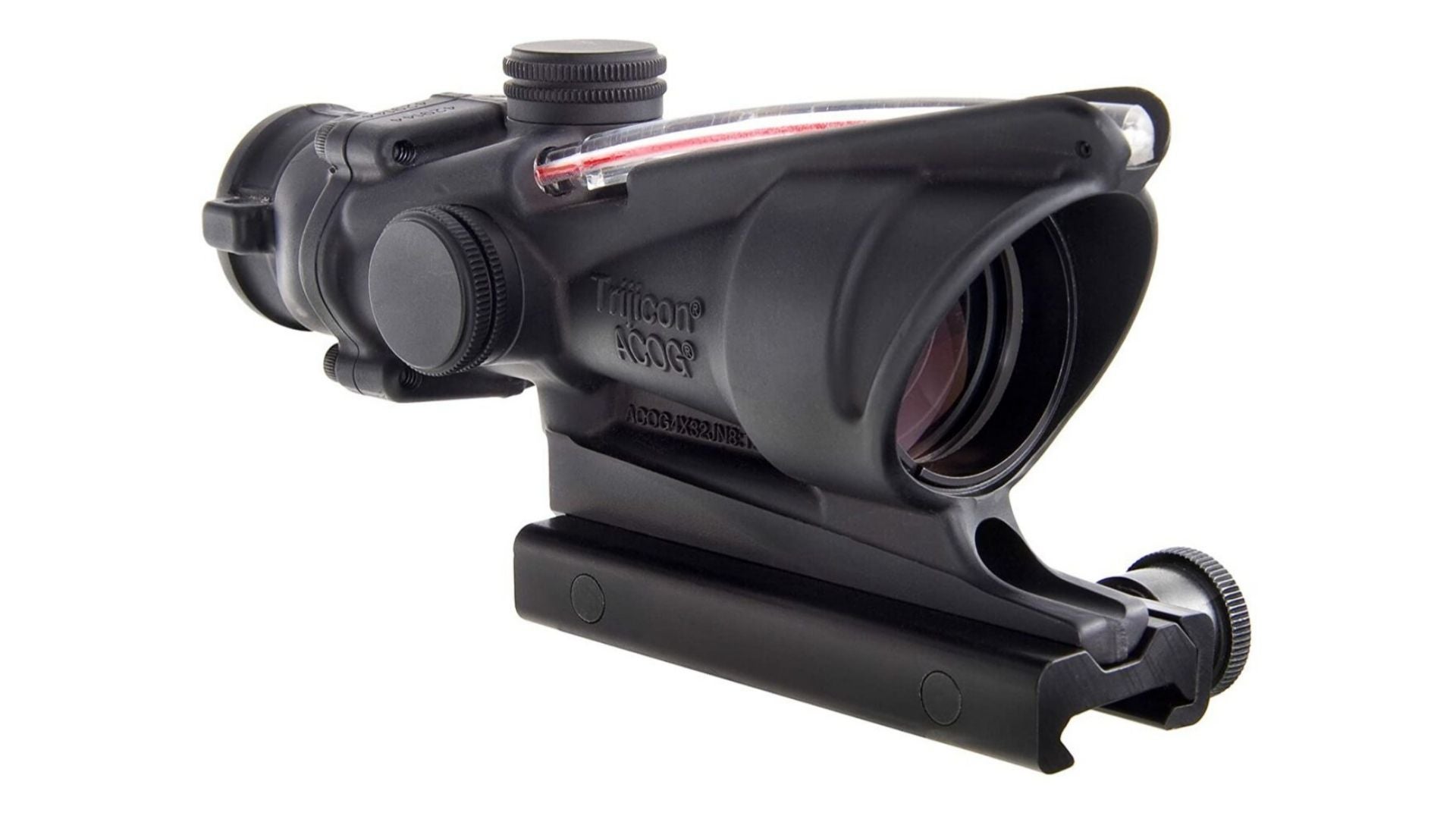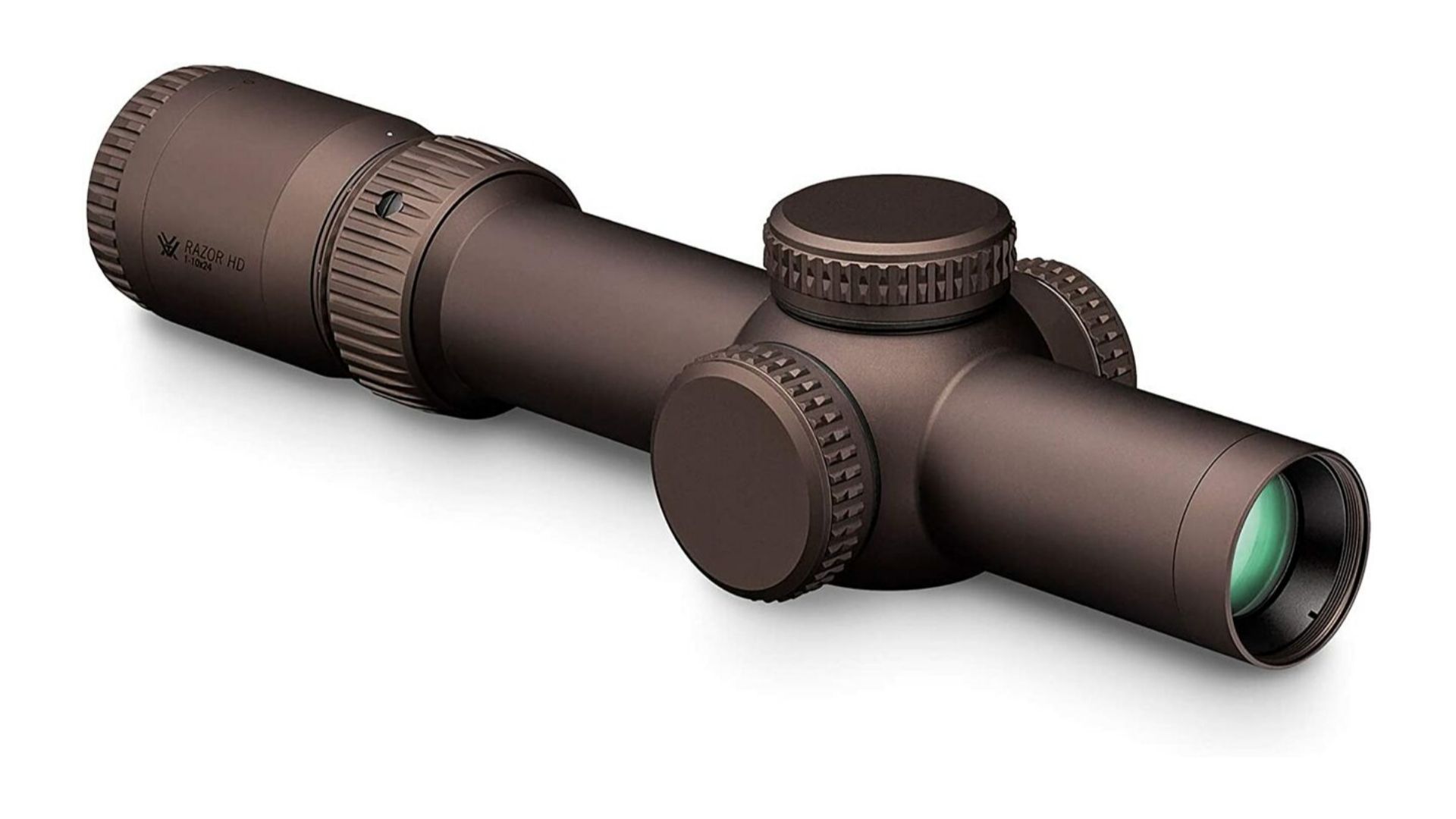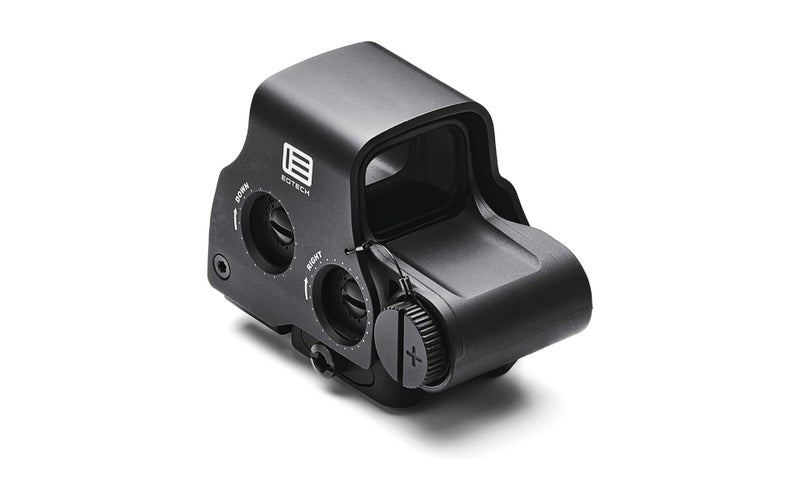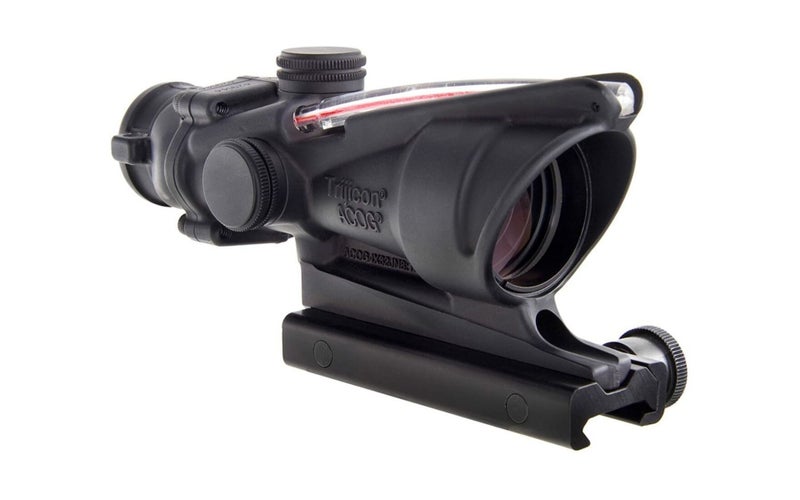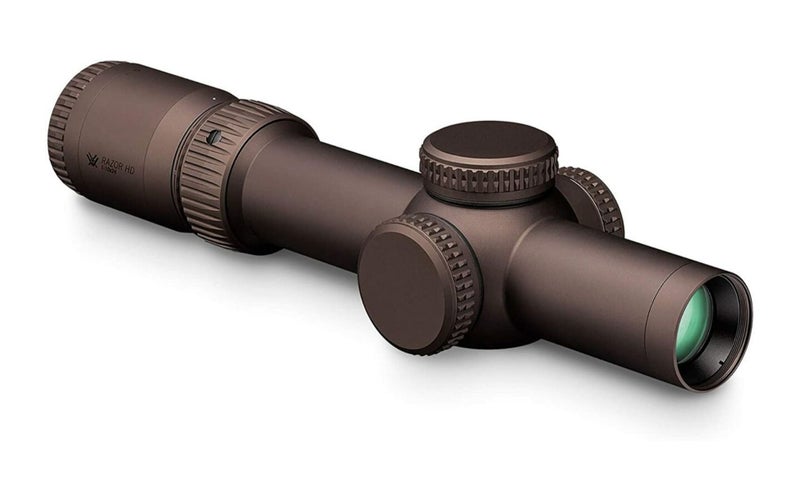We may earn revenue from the products available on this page and participate in affiliate programs.
AR-15 scopes are no longer a novelty. The military has used them since before the War on Terror and recreational shooters and hunters have made them a standard part of their rifle build. For modern shooters, the world is their oyster when it comes to optics, given the sheer number of AR rifle scopes on the market. Today, I’ve gathered our picks for great optics to use on the AR-15 rifle, subdivided into three separate categories: short-range, medium-range, and long-range.
Before I begin, though, several presumptions informed all my picks for the best AR-15 scopes. Firstly, I’m operating under the presumption that your AR-15 is chambered in 5.56×45 NATO or .223 Remington rather than a more exotic caliber like .300 AAC Blackout or 6.5 Grendel. Secondly, when I refer to the range, I’m referring to the capabilities of the 5.56 cartridge. In this context, short-range traditionally means less than 200 yards, medium-range means 200-400 yards, and long-range is anything over 500 yards (when 5.56 loses supersonic velocity and becomes less precise). Finally, the options in this article were selected with the serious leisure shooter, competitive shooter, and hunter in mind.
All of the suggestions on this list are based on expert input from competitive shooters, military personnel, and firearms historians, and are popular throughout the shooting world due to their performance, user-friendliness, and value for the price, which means that if the scope costs $2,000, there’s a very good reason.
At the top of the list is the EOTech EXPS3 Holographic Weapon Sight. This short-range AR optic has an overall user-friendly design for both performance and controls. It’s equipped with a wide aperture that delivers outstanding visual clarity and an intuitive reticle that makes transitioning to different targets easy. Plus, the EOTech design is both lightweight and combat durable.
The EXPS3 holographic sight features the “donut of death” reticle popularized by the “Call of Duty” video game franchise, but it does more than just look cool. The reticle is a 68-Minute of Angle circle with a 1-MOA dot in the center. By pairing the ring and dot together, you can get even more precise identifying your point of aim and point of impact.
The EXPS3 also provides a fairly high degree of control over brightness settings. The levels range from night vision mode, which is invisible to the naked eye but visible with a standard night vision device, to scorchingly bright. It’s so bright that it stands out against white desert sand under direct sunlight. This intense brightness allows for a crisp, clear reticle that is totally unaffected by factors like viewing angle, astigmatism in the shooter’s eye, and even magnification.
As for the actual controls, you use screws, marked for direction, on the side of the housing to adjust the reticle for windage and elevation. The controls for brightness double as the on and off switch, further streamlining the controls. The latter helps reduce the design’s overall length, so you can mount flip-to-side magnifiers close to the sight but with enough room to make setting adjustments on the optic.
The EOTech is also extremely durable, especially for having such a large exposed glass surface. It uses turret screws recessed into the body so you won’t accidentally bump and adjust the settings. And, all EXPS optics have a battery compartment that is perpendicular to the recoil impulse on a rifle, an upgrade from older models that were parallel to it and subsequently shook batteries loose.
Although there’s so much going for the EOTech EXPS3, it does have a few minor drawbacks. First, if you compare it to a military-grade red dot like the Aimpoint T2, it’s about an inch longer. The reason this could be an issue is if you wanted to mount more accessories to your rifle. It takes up a bit more rail space.
The second drawback is battery life. The EOTech optic is powered by a single CR123A battery that lasts for roughly 1,000 hours on the middle settings, which is what you’d use in most scenarios. But that’s nothing compared to five years of continuous use with the aforementioned red dot. The reason is a holographic sight draws more power than a red dot, so you’ll have to change batteries more often.
Lastly, the design doesn’t have a bullet drop compensator, so you’d have to zero it at the range you’d want to use it. While the EOTech optic is available with two- and four-dot reticles, which were designed for engaging targets at longer distances, they’re only really effective when paired with a magnifier.
- Reticle profile: 68 MoA ring around a 1 MoA dot
- Mounting method: M1913 Picatinny rail
- Power source: 1x CR123A battery
- Magnification: 1x
Combat-proven durability
Crystal clear reticle not affected by astigmatism
Easy to acquire new targets
Consumes more battery than red dots
Larger overall profile
No bullet-drop compensator without magnifier on specific models
I picked the Trijicon ACOG as one of the best optics for the same reasons that the U.S. military did some 35 years ago. When they adopted it in 1986, the Advanced Combat Optical Gunsight was ahead of its time with intuitive features, a battery-free illuminated reticle, and magnification power. With the “half a pair of binoculars” military scope, Trijicon arguably pioneered tactical optics.
The Trijicon TA31 is pleasantly simple and surprisingly capable as a fixed-power magnified optic. The glass is astonishingly clear, with no distortion, hue, or other visual artifacts. It has excellent light transmission, meaning that the scope view isn’t going to be noticeably darker than the naked eye, which becomes more crucial towards dusk.
The ACOG fixed-power 4x magnification optic features a reticle that’s illuminated by a combination of fiber optics and tritium gas. Together, they create a red chevron that allows you to quickly acquire a target inside 300 yards.
The reticle is also equipped with an incredibly simple bullet drop compensator. It allows you to estimate range based on the width of a man-size target using stadia lines, which show the estimated point of impact in hundreds of yards.
However, the bullet drop compensator is graduated based on the barrel length, bullet caliber and grain weight, and the maximum range of that projectile, so double-check that you’re buying the correct ACOG for your rifle so you can take advantage of the feature.
The ACOG’s durability is second to none. It’s constructed from machined aluminum and contains a few moving parts. It’s so rugged, in fact, that you can adjust for windage and elevation by turning the slotted turrets with pretty much anything. A flathead screwdriver, knife blade, or even the base of a shell casing.
While the Trijicon ACOG is still very much relevant today, it does have some shortcomings that are largely attributable to outdated design features. For starters, the ACOG has an extremely unforgiving eye box, meaning your eye needs to be precisely aligned with the scope. It also has very short eye relief. To see, you need to be approximately an inch from the viewing lens. However, both issues are largely remedied by the 3.5x TA11 ACOG. It has a more forgiving eye box (at the expense of some magnification).
Another issue is with the illuminated reticle. At night, it’s not always bright enough and during the day, it’s sometimes too bright, but there are simple remedies for these issues like letting your eyes adjust to the dark and covering up the fiber optic with some electrical tape. The bigger issue, though, is when the eye box and illuminated reticle issues come together while shooting at close-range targets.
Some argue that you can use the optic at close distances by simply shooting with both eyes open and tracking the reticle like a sort of red dot reflex sight, but that might take some time to get used to because of the unforgiving eye box. Yet, another workaround is mounting a Trijicon Ruggedized Miniature Red Dot, or RMR, on top of your ACOG, or in some sort of offset mount.
Trijicon is a legendary name in the manufacturing of tactical rifle optics, and the ACOG shows where that reputation comes from.
- Reticle profile: 5.53 MOA wide chevron, BDC post with stadia lines out to 800 yards
- Mounting method: M1913 Picatinny rail, or directly to carry handle upper
- Power source: N/A
- Magnification: 4x
Combat-proven durability
Supremely clear glass
Properly zeroed optic can easily engage targets out to 500 yards
Very limited eye box
Tritium is too dim until your eyes adjust, fiber optic is too bright without taping
Limited close-range capability
I can hear the “poortex” comments from the NightForce and Schmidt & Bender fanboys already, but I’m sticking to my guns on this one. The Vortex Razor HD is probably one of the best low-power variable optics on the market, especially if you want to test the limits of your AR platform. With the Razor HD rifle scope, you get superb optical clarity, reticle pattern, and massive magnification capabilities for a relatively reasonable price.
Compared to more expensive options, the Vortex Razor HD is a 1-10x magnification variable-power optic that can’t be beaten because it delivers probably 90 percent of what the expensive brands do but for less. For starters, the Razor HD is a 1-10x scope, which is unique in its own right because most comparable options are either 1-8x or 2-10x. The 1-10x option gives the most flexibility, though, because it allows you to use it as an unmagnified optic for close range and then extend out for long-range shooting or spotting.
The scope uses a “first focal plane” magnification style that allows the reticle to scale from an illuminated red circle and a T-shaped outer reticle and up to a fully-featured long-distance reticle pattern. The latter includes a wind and elevation hold grid as you zoom to maximum magnification.
Also, the reticle is very usable. You can use the highly visible red dot for close engagement and quick target transitions. On higher magnifications, the markings for your holds for distance and windage become visible and are available in either Minutes of Angle (MOA) or Milliradians (Mils).
Above the reticle, there is a range estimation ruler with stadia lines from 300 to 600 yards, which will allow you to quickly and easily range and engage targets at an unknown distance. These markings are not visible on lower magnifications, and so they won’t do much to obscure the sight picture when the Razor is being used as a close-in optic.
Additionally, the battery-powered illuminated reticle has 11 settings with an “off” setting in between each one, so you can save time and immediately switch to your preferred setting. The adjustment turrets are covered by turret caps, which prevent accidental adjustment and protect the turrets from dust infiltration. The optical glass is very clear and has very good light transmission. Even at higher magnifications, the reticle is crystal clear with no visible distortion, which is an issue on some less expensive variable-power optics.
Unfortunately, the Vortex Razor suffers from some very specific drawbacks on every advantage that it has. For starters, the Vortex struggles to be a jack of all trades in the magnification department. At lower magnification, it has some minor edge distortion and a fishbowl effect. And, at higher magnification, it has a very limited field of view.
The reticle has some limitations as well. The central illuminated portion takes up a lot of real estate at higher magnification, and it’s less precise than a conventional crosshair or chevron. But that’s likely because it still needs to be visible at lower magnifications. Speaking of the reticle, it’s also fairly complex for novice shooters. It requires a steeper learning curve than other options.
For the versatility you’re getting, the Vortex Razor HD is worth it in my book. This is the perfect optic to put on a special-purpose rifle build or used as a spotting scope to accompany a precision shooter with a more conventional bolt-action rifle.
- Reticle profile: 1 MOA center dot, 4 MOA quartered ring, MOA or Mils windage and elevation, wind call grid, distance estimation ruler
- Mounting method: Scope rings (sold separately)
- Power source: CR2032 battery (included)
- Magnification: 1x-10x
Variable power, 1 to 10 times magnification
Adjustable brightness for different lighting conditions
Very clear glass
No locking turrets
Edge distortion at low magnifications, less than optimal reticle at high magnifications
Complex reticle is user-unfriendly for beginners
Why you should trust us
For this article, I considered a variety of expert opinions on what makes a good AR optic. My findings were based on my professional and personal experience in shooting sports as well as the expert opinions of other serious shooters and credible hobbyists. While I conducted in-person interviews with those much more knowledgeable on optics than myself, I relied on product testing published by InRange TV and 9-Hole Reviews.
Types of AR-15 scopes
AR optics fall into four major categories: red dot, holographic, fixed-power, and variable power. Each one offers significant advantages and disadvantages that are endemic to the platform and should be considered when buying a new optic. Here’s a breakdown of these optic types, how they work, and a summary of their advantages and disadvantages.
Red dot
Red dot optics are the simplest optics on this list. They produce the reticle by projecting a simple colored LED light onto a pane of glass. The light can be filtered through a shaped aperture, which can allow for red dots with things like crosshairs, ACSS reticles, and chevron reticles.
In general, the advantages of red dots are that they are extremely durable, can be made incredibly small, and have incredibly long battery lives, sometimes stretching well into tens of thousands of hours.
Disadvantages of red dots are that the light can appear streaked or starburst for those with astigmatism, total loss of capability if the battery does go out, and reticle scaling under magnification, meaning that if you magnify a red dot, the dot gets bigger, which can take up more of your field of view.
Holographic
Holographic sights work by projecting an image with lasers between two mirrors and two panes of glass, causing a reticle that “floats” in front of your weapon when viewed through the hologram window.
Holographic sights have the advantage of being mostly unaffected by astigmatism in the shooter’s eye. They also have very crisp reticles that are unaffected by magnification, meaning it magnifies the image but not the reticle, so you can be more precise with your aim.
The disadvantage of holographic optics is that they project a holographic image with laser energy, and so they consume significantly more battery power than red dots, oftentimes with one-fiftieth battery life. Another disadvantage is that they’re usually significantly larger, due to the more complex emitter.
Fixed-power
Fixed-power optics do not change magnification levels, and while technically you could argue that red dots and holographic sights are fixed power, I’m using fixed-power to mean lensatic optics with an etched reticle, which includes unmagnified optics like prismatic optics that can take the place of a red dot.
Fixed-power optics have several advantages, namely that due to their etched reticle, they do not require battery power to work, and their reticle image will be overall more precise. Additionally, they will often have an improved field-of-view and clarity over variable-power optics, with their lens geometry being precisely engineered for a single magnification level. They may feature illuminated reticles as an option, and many high-magnification precision optics are fixed-power.
Their primary disadvantage is their lack of flexibility at different ranges, meaning that optics with a high enough magnification level are effectively unusable at closer ranges, and vice versa.
Variable-power
Variable power optics are similar in construction to their fixed-power brethren in that they use lenses that feature etched reticles. The key difference is that they can toggle through magnification settings to address different ranges. They come in two major varieties: first focal plane, and second focal plane.
The first focal plane offers a scaling reticle that increases in size as you zoom in. It’s useful for shooters who want reticles that reveal finer detail when zoomed in, which can be useful when shifting from low magnification where a coarse optic is needed, to high magnification when things like wind call grids and bullet drop compensators become more relevant.
The second focal plane has a reticle that does not change size even as magnification is changed. It’s useful for shooters who want to maintain visual similarity of the reticle across all magnification levels, and who understand that they will have to do mental math to convert measurements depending on the magnification level.
One advantage of variable power optics is that they allow you to have a single optic that can be used at multiple distances without needing offset red dots, re-zeroing, or backup iron sights. Another advantage is that they can allow you more magnification than you typically need at a certain distance. This allows for improved visibility to ensure, for instance, you’re indeed about to shoot a coyote hiding in the brush and not a young fawn.
The disadvantage of variable power optics is that they’re oftentimes more expensive, heavier, and larger than equivalent fixed-power optics. Also, lower-end options can experience visual distortion at different magnification levels.
Key features of AR-15 scopes to consider
Magnification level or “power”
The magnification level of an optic represents how many times the image will be magnified before hitting your eye. Lower magnification levels can offer an increased field of view with the tradeoff of their image magnification not being as strong.
Objective lens diameter
The objective lens is the lens that faces the target, or the front lens. The diameter of the objective lens determines how much light the scope takes in. It’s represented numerically by the second number on the scope’s specification. For example, a rifle scope listed as “4×32” means the objective lens is 32mm in diameter. A larger objective lens, which will let in more light, is optimal for shooting at dusk or in lowlight conditions from a stationary position.
Adjustment turrets
The adjustment turrets on an optic allow the shooter to zero their optic by moving the reticle, usually with a tactile click that represents a certain number of minutes of angle. In general, the knob on the side of the optic will adjust windage while the one on top adjusts for elevation. You also used these knobs to make adjustments as needed.
Eye relief
Eye relief is the length between the shooter’s eye and the viewing lens of the optic when a target is in focus. The distance can be less than an inch to almost one foot. While it’s largely a matter of personal preference, it is something to consider when mounting a scope.
Parallax
Parallax is one of those things that’s easier to see than explain. Essentially, it’s when the reticle moves (even if the scope and rifle are stationary) because you changed your point of view. It happens when your POV and scope’s POV aren’t perfectly aligned.
AR-15 scope pricing considerations
Low
The low end of the pricing scale for optics is less than $500. This is where you’ll find a lot of inferior optics, but certain brands like Holosun and Primary Arms produce optics that are of decent quality for beginners. Avoid large magnified optics in this price range
Medium
This medium price range runs between $500 and $1000. This is where you’ll find quality red dots and holographic sights, and lightly used or discounted fixed power optics like the ACOG. You will also find entry-level LPVOs and precision optics. However, these are usually of inferior quality and will often have issues such as poor light transmission, edge warping, poor recoil resistance, and wandering zero.
High
At more than $1000, the high-end of the price section has no upward limit and in this area, you’ll find quality magnified optics of many types, ranging from the ACOG to premium optics from Schmidt and Bender, Nightforce, Steiner, and Leupold that can cost more than $4,000. In this range, you’ll pay dearly, but you’ll be getting optics that are on the cutting edge of technological development, and that you can count on to help you get rounds on target, usually also covered by great warranties and customer service.
How we chose our top picks
For this article, the reviewed rifle scopes for how well they work when shooting at short-, medium-, and long-range targets. In other words, we didn’t access them for niche capabilities like how well they work with night vision or thermal. This allowed us to keep this list clear and concise, and give the reader an easy-to-understand guide for buying a premium optic.
FAQs on AR-15 scopes
Task & Purpose answers to the most commonly searched questions on the Internet on this topic.
Q. What optics do the Navy SEALs use?
A: Navy SEALs use many different types of optics, including the optics that were listed here. The EoTech EXPS in particular has been spotted in heavy rotation since its inception. However, no list is ever going to be truly comprehensive, given the dizzying speed at which new optics are developed and adopted among special operations forces.
Q. What is the clearest rifle scope?
A: In my personal experience, Trijicon has produced some of the clearest magnified optics out there, with both the ACOG and VCOG providing gloriously sharp images and great light transmission that’s comparable with the naked eye. This should be taken with a grain of salt because I’ve never had the chance to look through something from Schmidt & Bender or anything of that caliber.
Q. What is an LPVO scope?
A: Low power variable optics (LPVO) are optics that feature a relatively low maximum magnification, but allow you to cycle through magnifications to get a sight picture that fits the task and hand. Whether they’re older types like the Elcan Specter, or the latest 2.5-8x optic being fielded by the Marine Corps on the M38 Squad Designated Marksman Rifle system, LPVOs are excellent when you expect to engage targets at a variety of unpredictable distances.
Q. What magnification is needed for AR-15 scopes?
A: The magnification needed will change based on the task at hand. In general, I’ve found that unmagnified optics are capable for addressing targets less than 100 yards away; 4x magnification for 300 yards; and 8x or higher for 500 yards or more. If you anticipate engaging targets at a wide variety of distances, it might be worth it to shell out for a quality LPVO, which gives you the flexibility to adjust the magnification on the fly.
Q. Why do you need fancy optics? Back in my day we shot iron sights on the M16A1 and we liked it! This new Corps…
A: OK, Boomer.
Our gear section
Matt Sampson is a Task & Purpose commerce writer. An 0861 in the Marine Forces Reserve and a Virginia native, he worked in tactical gear retail in his past life and is an avid firearms enthusiast. The farthest the Marine Corps has sent him from home is California.
